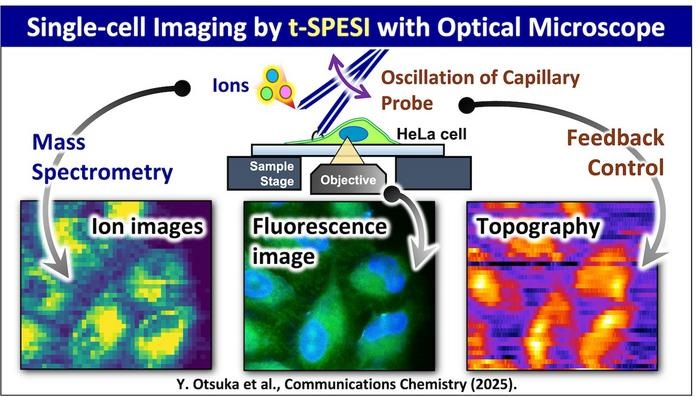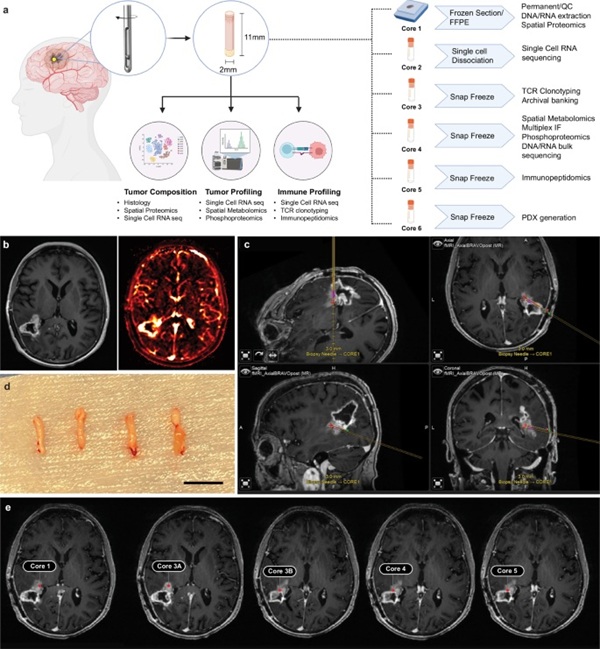Bacterial Drug Sensitivity Identified by Immunoflow Cytometry
|
By LabMedica International staff writers Posted on 11 Jan 2012 |
Antibiotic sensitivity or resistance of Staphylococcus aureus can be reliably differentiated by flow cytometry when labeled with nucleic acid dye.
An alternative approach to differentiate between methicillin-resistant S. aureus (MRSA) and methicillin-susceptible S. aureus (MSSA) can be achieved by labeling with a S. aureus-specific antistaphylococcal protein A antibody instead of nucleic acid dyes.
Scientists at the Cleveland Clinic, (OH ,USA) analyzed a total of 103 clinical isolates of S. aureus including 49 MRSA and 54 MSSA, obtained from the Cleveland Clinic clinical microbiology laboratory. These were isolates from blood, respiratory, tissue, and wound cultures, and were all obtained from different patients. Labeled bacterial cells were analyzed in a Micro PRO flow cytometer using a sampling volume of 0.25 mL.
All 103 isolates were correctly identified as S. aureus by producing a signal when labeled with the anti-S. aureus protein A antibody. Ten coagulase-negative staphylococci and two enterococci used as controls did not produce a signal with the antibody. A batch of 12 samples could be analyzed in 6.5 hours, which includes 4 hours of incubation in the presence of oxacillin, and 1 hour of this being hands-on time. The Micro PRO flow cytometer (Advanced Analytical Technologies, Inc.; Ames, IA, USA) used in the assay allows for random access testing, whereby individual samples can be analyzed independently. Although sample preparation would be more efficiently done in batches, the actual flow cytometry itself does not require batch testing, and a clinical laboratory has the option of using this technology in real-time.
The cost per sample of this immunoflow cytometry assay is estimated to be about USD 11 per sample, compared with about USD 24 by flow cytometry using a peptide nucleic acid (PNA) probe, and USD 45 for the same identification using a commercially available real-time polymerase chain reaction (PCR) assay. The costs of commercially available simple flow cytometers capable of analyzing particles the size of bacteria are estimated to be between USD 60,000 and USD 100,000. The authors concluded that immunoflow cytometry is a viable method of rapidly identifying S. aureus and differentiating MRSA from MSSA, and comes with many of the advantages of flow cytometry and microorganism-specific labeling associated with using PNA probes. The study was published on December 27, 2011, in the European Journal of Clinical Microbiology and Infectious Diseases.
Related Links:
Cleveland Clinic
Advanced Analytical Technologies
An alternative approach to differentiate between methicillin-resistant S. aureus (MRSA) and methicillin-susceptible S. aureus (MSSA) can be achieved by labeling with a S. aureus-specific antistaphylococcal protein A antibody instead of nucleic acid dyes.
Scientists at the Cleveland Clinic, (OH ,USA) analyzed a total of 103 clinical isolates of S. aureus including 49 MRSA and 54 MSSA, obtained from the Cleveland Clinic clinical microbiology laboratory. These were isolates from blood, respiratory, tissue, and wound cultures, and were all obtained from different patients. Labeled bacterial cells were analyzed in a Micro PRO flow cytometer using a sampling volume of 0.25 mL.
All 103 isolates were correctly identified as S. aureus by producing a signal when labeled with the anti-S. aureus protein A antibody. Ten coagulase-negative staphylococci and two enterococci used as controls did not produce a signal with the antibody. A batch of 12 samples could be analyzed in 6.5 hours, which includes 4 hours of incubation in the presence of oxacillin, and 1 hour of this being hands-on time. The Micro PRO flow cytometer (Advanced Analytical Technologies, Inc.; Ames, IA, USA) used in the assay allows for random access testing, whereby individual samples can be analyzed independently. Although sample preparation would be more efficiently done in batches, the actual flow cytometry itself does not require batch testing, and a clinical laboratory has the option of using this technology in real-time.
The cost per sample of this immunoflow cytometry assay is estimated to be about USD 11 per sample, compared with about USD 24 by flow cytometry using a peptide nucleic acid (PNA) probe, and USD 45 for the same identification using a commercially available real-time polymerase chain reaction (PCR) assay. The costs of commercially available simple flow cytometers capable of analyzing particles the size of bacteria are estimated to be between USD 60,000 and USD 100,000. The authors concluded that immunoflow cytometry is a viable method of rapidly identifying S. aureus and differentiating MRSA from MSSA, and comes with many of the advantages of flow cytometry and microorganism-specific labeling associated with using PNA probes. The study was published on December 27, 2011, in the European Journal of Clinical Microbiology and Infectious Diseases.
Related Links:
Cleveland Clinic
Advanced Analytical Technologies
Latest Microbiology News
- New Blood Test Detects Up to Five Infectious Diseases at POC
- Molecular Stool Test Shows Potential for Diagnosing TB in Adults with HIV
- New Test Diagnoses Bacterial Meningitis Quickly and Accurately
- Handheld Device Delivers Low-Cost TB Results in Less Than One Hour
- New AI-Based Method Improves Diagnosis of Drug-Resistant Infections
- Breakthrough Diagnostic Technology Identifies Bacterial Infections with Almost 100% Accuracy within Three Hours
- Innovative ID/AST System to Help Diagnose Infectious Diseases and Combat AMR
- Gastrointestinal Panel Delivers Rapid Detection of Five Common Bacterial Pathogens for Outpatient Use
- Rapid PCR Testing in ICU Improves Antibiotic Stewardship
- Unique Genetic Signature Predicts Drug Resistance in Bacteria
- Unique Barcoding System Tracks Pneumonia-Causing Bacteria as They Infect Blood Stream
- Rapid Sepsis Diagnostic Test Demonstrates Improved Patient Care and Cost Savings in Hospital Application
- Rapid Diagnostic System to Detect Neonatal Sepsis Within Hours
- Novel Test to Diagnose Bacterial Pneumonia Directly from Whole Blood
- Interferon-γ Release Assay Effective in Patients with COPD Complicated with Pulmonary Tuberculosis
- New Point of Care Tests to Help Reduce Overuse of Antibiotics
Channels
Clinical Chemistry
view channel
AI-Powered Blood Test Accurately Detects Ovarian Cancer
Ovarian cancer ranks as the fifth leading cause of cancer-related deaths in women, largely due to late-stage diagnoses. Although over 90% of women exhibit symptoms in Stage I, only 20% are diagnosed in... Read more
Automated Decentralized cfDNA NGS Assay Identifies Alterations in Advanced Solid Tumors
Current circulating cell-free DNA (cfDNA) assays are typically centralized, requiring specialized handling and transportation of samples. Introducing a flexible, decentralized sequencing system at the... Read more
Mass Spectrometry Detects Bacteria Without Time-Consuming Isolation and Multiplication
Speed and accuracy are essential when diagnosing diseases. Traditionally, diagnosing bacterial infections involves the labor-intensive process of isolating pathogens and cultivating bacterial cultures,... Read more
First Comprehensive Syphilis Test to Definitively Diagnose Active Infection In 10 Minutes
In the United States, syphilis cases have surged by nearly 80% from 2018 to 2023, with 209,253 cases recorded in the most recent year of data. Syphilis, which can be transmitted sexually or from mother... Read moreMolecular Diagnostics
view channel
POC Diagnostic Platform Combines Immunoassay and Molecular Testing
An innovative diagnostic platform offers superior sensitivity across all sample types, including blood, compared to existing rapid tests, while maintaining a low-cost, user-friendly design.... Read more
Single Blood Test Could Detect Different Types of Cancer at Early Stages
Currently, reliable screening for only a few types of cancer is available, such as those affecting the breast, bowel, cervix (neck of the womb), and lung for individuals at high risk. While these screenings... Read moreHematology
view channel
First Point-of-Care Heparin Monitoring Test Provides Results in Under 15 Minutes
Heparin dosing requires careful management to avoid both bleeding and clotting complications. In high-risk situations like extracorporeal membrane oxygenation (ECMO), mortality rates can reach about 50%,... Read more
New Scoring System Predicts Risk of Developing Cancer from Common Blood Disorder
Clonal cytopenia of undetermined significance (CCUS) is a blood disorder commonly found in older adults, characterized by mutations in blood cells and a low blood count, but without any obvious cause or... Read moreImmunology
view channel
Stem Cell Test Predicts Treatment Outcome for Patients with Platinum-Resistant Ovarian Cancer
Epithelial ovarian cancer frequently responds to chemotherapy initially, but eventually, the tumor develops resistance to the therapy, leading to regrowth. This resistance is partially due to the activation... Read more
Machine Learning-Enabled Blood Test Predicts Immunotherapy Response in Lymphoma Patients
Chimeric antigen receptor (CAR) T-cell therapy has emerged as one of the most promising recent developments in the treatment of blood cancers. However, over half of non-Hodgkin lymphoma (NHL) patients... Read morePathology
view channel
New Technology Improves Understanding of Complex Biological Samples
Tissues are composed of a complex mixture of various cell types, which complicates our understanding of their biological roles and the study of diseases. Now, a multi-institutional team of researchers... Read more
Combining Multiple Laboratory Techniques Provides Deeper Insights into Deadly Brain Tumors
Glioblastoma (GBM) is a highly aggressive primary brain cancer that currently has limited effective treatments. Stereotactic needle biopsies are commonly employed for diagnosis; however, their use is restricted... Read more
AI-Based Diagnosis System Identifies Malaria Parasites from Blood Smear Images
Malaria diagnosis has traditionally been performed manually via microscopic examination, a process that is not only time-consuming but also highly dependent on the expertise and accuracy of healthcare providers.... Read moreTechnology
view channel
Advanced Predictive Algorithms Identify Patients Having Undiagnosed Cancer
Two newly developed advanced predictive algorithms leverage a person’s health conditions and basic blood test results to accurately predict the likelihood of having an undiagnosed cancer, including ch... Read more
Light Signature Algorithm to Enable Faster and More Precise Medical Diagnoses
Every material or molecule interacts with light in a unique way, creating a distinct pattern, much like a fingerprint. Optical spectroscopy, which involves shining a laser on a material and observing how... Read more
Disposable Microchip Technology Could Selectively Detect HIV in Whole Blood Samples
As of the end of 2023, approximately 40 million people globally were living with HIV, and around 630,000 individuals died from AIDS-related illnesses that same year. Despite a substantial decline in deaths... Read more
Pain-On-A-Chip Microfluidic Device Determines Types of Chronic Pain from Blood Samples
Chronic pain is a widespread condition that remains difficult to manage, and existing clinical methods for its treatment rely largely on self-reporting, which can be subjective and especially problematic... Read moreIndustry
view channel
Qiagen Acquires NGS Analysis Software Company Genoox
QIAGEN (Venlo, the Netherlands) has signed a definitive agreement to acquire Genoox (Tel Aviv, Israel), a provider of artificial intelligence (AI)-powered software that enables clinical labs to scale and... Read more
Cepheid and Oxford Nanopore Technologies Partner on Advancing Automated Sequencing-Based Solutions
Cepheid (Sunnyvale, CA, USA), a leading molecular diagnostics company, and Oxford Nanopore Technologies (Oxford, UK), the company behind a new generation of sequencing-based molecular analysis technologies,... Read more
Grifols and Tecan’s IBL Collaborate on Advanced Biomarker Panels
Grifols (Barcelona, Spain), one of the world’s leading producers of plasma-derived medicines and innovative diagnostic solutions, is expanding its offer in clinical diagnostics through a strategic partnership... Read more

















